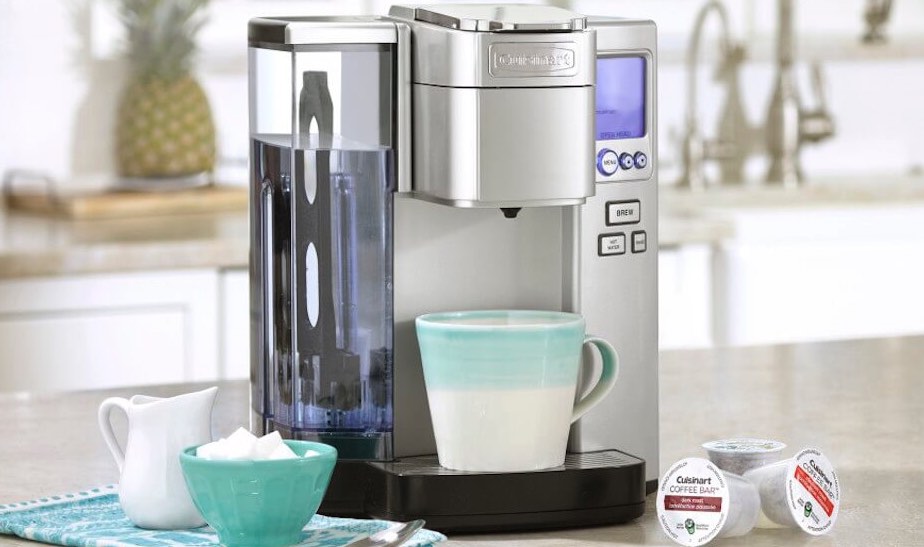The Cuisinart SS-10 is known for its durability and tasty coffee. But for it to maintain your coffee’s taste, you need to descale it from time to time.
When you descale your Cuisinart SS-10 coffee maker, you will be getting rid of metals, rust, salt, and other substances that may have settled inside during use. The best thing about descaling is that it won’t take much of your time. Simply follow the steps provided here.
What does descale mean on a Cuisinart coffee maker?
Water contains natural minerals such as calcium and magnesium. When you brew your coffee, these minerals leave ugly scaly deposits on the coffee maker’s surfaces. Even though they are not dangerous, they may decrease the coffee maker’s performance.
Descaling is important because it improves the coffee maker’s performance. It also helps in maintaining its heating elements and internal parts.
READ: How to reset the Nespresso Vertuo
Cuisinart manufacturers recommend performing the descaling procedure every three to six months. If you are using hard water, you should descale it more often to get rid of the calcium deposits.
Unlike any other coffee maker, the Cuisinart coffee maker has sensors that detect when limescale buildup interferes with the coffee maker’s performance.
It will display ‘DE-SCALE’ on the control panel and require that you descale the machine. You can, however, descale the coffee maker even when the alert is not displayed on the screen.
A flashing light may also alert you that you should descale or clean a Cuisinart coffee maker K-Cup side.
How to descale a Cuisinart SS-10 coffee maker
You can descale a Cuisinart coffee maker using a vinegar solution. White vinegar is the best cleaning agent that cleans off any scaly or calcium deposits. You will also require a wet rag or paper towel and tap water.
Below are the steps on how to descale a Cuisinart coffee maker with vinegar:
- Empty the reservoir.
- Turn off the AUTO OFF and OFF TIME features.
- Remove any capsule in the brewing chamber before starting the descaling procedure.
- Pour two and a half cups of white vinegar and five cups of tap water into the reservoir.
- Place a large mug or bowl on the drip tray. Press and hold the HOT WATER and RINSE buttons simultaneously to begin the descaling process.
- When the reservoir is empty, pour out the content in the mug.
- Repeat step five until an ADD WATER alert appears on the control panel.
- Rinse the water reservoir completely and fill it with fresh water.
- Repeat step five until the ADD WATER alert is displayed on the control panel.
- In some cases, you may need to perform an additional Hot Water cycle to get rid of the remaining vinegar taste by adding fresh water and pressing the HOT WATER button until the reservoir is empty.
READ: How to descale a Nespresso Delonghi
Why is DESCALE still showing on the control panel?
You have performed the above descaling process, but DESCALE is still displayed on the control panel. This means that there are remains of calcium and limescale deposits in the coffee maker.
You can clean them using these two solutions:
- Press the HOT WATER button for six seconds to reset the coffee maker. If this does not work, press and hold the HOT WATER and RINSE buttons simultaneously to eliminate the descaling message.
- You can also turn off the machine and unplug it from power for 30 to 60 minutes. Plug the coffee maker back to the mains power supply and check if the descaling light is off. If it is not, you should contact Cuisinart customer service for further assistance.
Get your Cuisinart coffee maker brewing again
The reason why your Cuisinart coffee maker requires descaling is to remove the scaly calcium deposits that form when brewing coffee. Descaling is an easy and quick process that improves the coffee maker’s performance and coffee taste.
If you have performed the above procedures and the DESCALE message is still displaying on the control panel, you should contact Cuisinart customer service to troubleshoot the problem.

